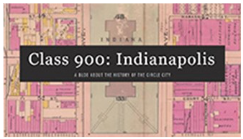Hoosier History Live is an independently produced new media project about Indiana history, integrating podcasts, website, newsletter, and social media. Its original content comes initially from a live with call in weekly talk radio show hosted by author and historian Nelson Price. You can hear the show live Saturdays from noon to 1 pm ET. It’s over the air in Central Indiana at WICR 88.7 fm, or you can stream at the WICR HD1 app on your phone.
August 26, 2023
White River State Park history
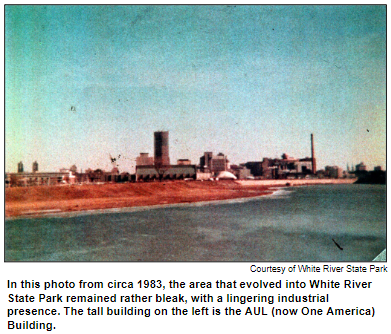
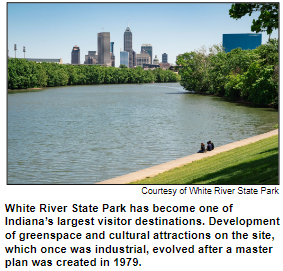 Who knows if the soil is rich at the site that's now White River State Park? Regardless, the history of the site near downtown Indianapolis that's now a 250-acre cultural campus certainly can be described as rich and mighty colorful.
Who knows if the soil is rich at the site that's now White River State Park? Regardless, the history of the site near downtown Indianapolis that's now a 250-acre cultural campus certainly can be described as rich and mighty colorful.
Beginning as a fishing ground for Native Americans and encompassing a long era in which the area was industrial, bleak and unappealing, the White River State Park site today has an array of enticements to attract visitors, including an amphitheater for popular concerts. The park includes a portion of the Central Canal, where gondola rides are available, and there are promenade pedestrian walkways. (The portion of the Central Canal west of the West Street bridge is considered part of White River State Park.)
The White River State Park campus also includes Military Park, which was the setting for the first Indiana State Fair in 1852. Later, Military Park was a training ground for Civil War soldiers.
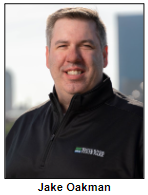 To share insights about the White River State Park site, then and now, Nelson will be joined in the studio by Jake Oakman, executive director of the park. Before his current post, Jake was a speechwriter for Gov. Eric Holcomb and communications director for Visit Indiana. Today, the White River State Park campus has become one of Indiana's most-visited attractions.
To share insights about the White River State Park site, then and now, Nelson will be joined in the studio by Jake Oakman, executive director of the park. Before his current post, Jake was a speechwriter for Gov. Eric Holcomb and communications director for Visit Indiana. Today, the White River State Park campus has become one of Indiana's most-visited attractions.
The TCU Amphitheater has been a popular concert venue since opening in 2021 on the former site of the Beveridge Paper Company, one of the final industrial sites in the area to shut down. As a concert venue, the amphitheater replaced the Lawn, which had opened in 2004 with a temporary stage that had to be dismantled every fall and rebuilt in the spring.
According to historical accounts of the White River State Park site, industrial buildings, including mills, began there in the 1850s. The Acme-Evans Milling Company owned a sprawling complex that included the land where the Indiana State Museum now stands. The park also includes the NCAA Headquarters and Hall of Champions, an interactive museum; in 1999, the NCAA moved from Kansas City to Indianapolis.
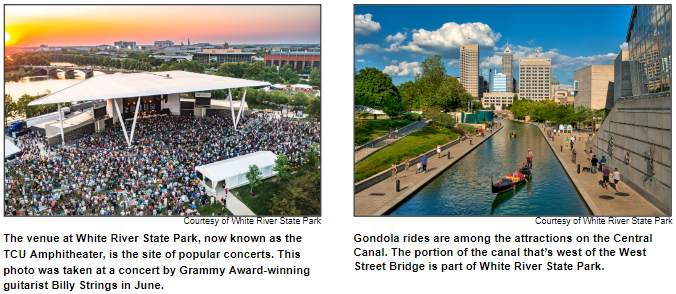
That was nearly 180 years after a significant historical event occurred at the future White River State Park site. In 1820, state leaders met at the cabin of pioneer John McCormick to decide on the specific site for the new state capital of Indianapolis. A commemorative boulder with a plaque marks the site of the McCormick cabin in White River State Park.
Before the arrival of European heritage settlers, the park site had been fishing grounds for Native Americans, including the Lenape tribe, which the white pioneers called the Delaware. Hoosier History Live did a show in 2014 about the Lenape, who left Indiana in what has been called a "forced migration".
Some other history facts:
-
During the late 1970s, the White River State Park Development Commission, a quasi-governmental agency, was created. Its first task was to develop a master plan for the park.
-
In 1988, a promenade pedestrian walkway opened along the upper bank of the White River in the park.
-
In addition to exploring the evolution of the White River State Park site, Nelson will be asking Jake Oakman about future plans during our show. On the former site of the GM Stamping Plant, Elanco announced in 2020 that it will build a global headquarters. As part of that project, White River State Park will develop a 15-acre extension that involves rerouting White River Parkway.
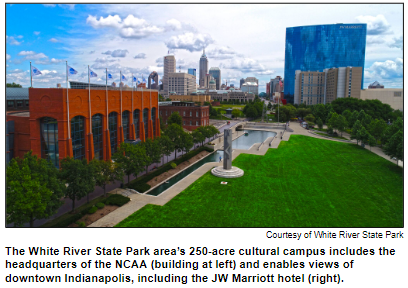
Hoosier History Live has explored the history of the White River in several previous shows, most recently a program in 2022 that delved into the challenges to make it navigable that confronted early residents and state leaders. We also plunged into river history in two shows in 2019, a program in July and a follow-up in October. This new show, however, will be our first to focus on the history of White River State Park.
-
Jake Oakman has been a previous guest on Hoosier History Live shows. They include a program in 2017 that highlighted Frank Sinatra's connections to Indiana. (Jake is an avid Sinatra fan.)
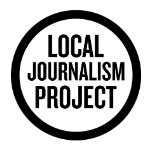
"Hoosier History really is 'Live' - and 'Lively' as well. The program brings to new audiences the delight and wisdom that comes with knowing more of our past and our connections as Hoosiers."
- James H. Madison, Emeritus History Professor, Indiana University
Your contributions help keep Hoosier History Live on the air, on the web and in your inbox!

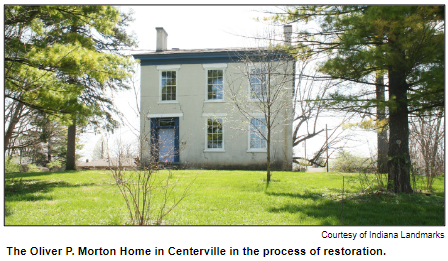
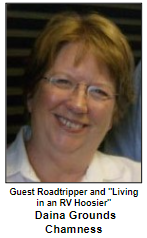 Guest Roadtripper
Guest Roadtripper 